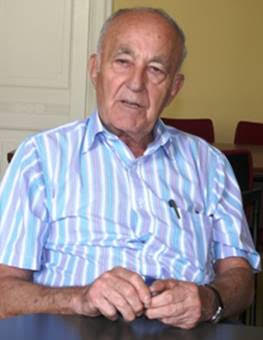
THE VOICE OF INTERNATIONAL LITHUANIA
|
VilNews has its own Google archive! Type a word in the above search box to find any article.
You can also follow us on Facebook. We have two different pages. Click to open and join.
|
Business, economy, investments
Economic growth in a multispeed world
- Posted by - (1) Comment
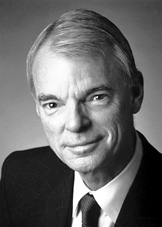
Professor Michael Spence,
recipient of the 2001 Nobel Memorial
Prize in Economic Sciences
A review of:
Michael Spence, The Next Convergence: The Future of Economic Growth in a Multispeed World. New York: Farrar, Straus and Giroux 2011. xvi+296 pages.
The book is a product of the independent High Level Commission on Growth and Development that completed its work in 2010. Members of the Commission included leaders of social and economic transformations internationally and top global experts such as Robert Solow, the father of modern growth theory, and Mohamed El-Erian, CEO of Pimco. Prof. Michael Spence, the 2001 Nobelist in Economics, chaired this unique effort.
The reading of this book is a humbling experience. The reader is immediately hit by the vast intellectual expanse of the topic and the Author’s Nobel winning theoretical brilliance combined with his “hands-on” practical-analytical, integrative, and simplifying capabilities keeping the argumentation both rigorous and free from the rather unnecessary technical jargon.
Prof. Spence argues that the formerly huge asymmetries between advanced and developing countries are declining and the pattern for the first time in some 250 years is that of convergence rather than the usual divergence. Part one of the book deals with the shifting characteristics of the postwar global economy, part two is devoted to sustained economic growth theory and practices, part three analyzes the development impact of the Great Recession that started in 2008, and part four analyzes the future trends and sustainability of economic growth. Throughout the book, the leading leitmotiv is the issues of economic governance and leadership in this new era of convergence.
Economic growth dynamics is sometimes subject to hitherto rather unexplained statistical laws. For example, the so called 72 rule used by statisticians of growth says that the time it takes in years to double the economy in size is equal to 72 divided by the specific annual growth rate. So at 1% (e.g. EU) growth rate, economy (or income) doubles in 72 years; at China’s usual 10% growth rate, economy doubles in roughly 7 years. This gives the reader a measure of the great power of the new convergence processes as well as a measure of the opportunity cost of development retardation due to wars, totalitarianism, political turmoil, endemic corruption or natural factors. Many developing countries, especially small and/or landlocked ones, spend long periods of time languishing in a low growth mode due to these factors. This “low equilibrium”, that is not unlike a gravitation pull, must be broken by a decisive leadership and then shifted to a new sustainable pattern. Somewhat different challenges await countries that have already largely achieved a middle-income plateau.
Prof. Spence argues that we are now midway through a century of high growth in the developing world and a convergence with the advanced countries; this is the main trend that will change the world beyond recognition. He explains what happened to cause this dramatic shift in the prospects of the 5 billion or so people who live in developing countries, his discussions of human capital, knowledge transfer, and governance in the developmental catch-up processes are revealing.. These newcomer countries have already become an increasingly important engine of growth in the global economy bringing about the prospects of new, multi-speed and multi-polar global village. I about a decade, over 50% of the global product will come from these developing countries that are probably better named emerging markets. This is a very optimistic message. However, these extraordinary developments will yet present hitherto unknown challenges in governance, international coordination, and environmental sustainability on a global scale, no doubt about it. The Author ventures a bold and lucid analysis of what is at stake for us and our children in this new brave converging global economy.
The book is likely to become a reference material for top level discussions about the state of this global village of ours in the next few decades. In particular, this Great Recession of will propel the book to one of the main readings on how to creatively rebalance the global economy and arrive at new and more sustainable re-combinations of global, continental, national, regional, local, and individual economic interests. As well, the thinking about modern roles of all the levels of government in the economy will be impacted deeply by this book. That helps a lot in the era of deepening theoretical confusion and helpless doom and gloom prognostications.
With a certain effort, the book is accessible to most educated readers. A very broad spectrum of readers can immensely benefit from reading this unique book but leaders of all kinds of organizations dispersed globally should adopt it as a must read.
Valdas Samonis
Institute for New Economic Thinking, New York City
and SEMI Online, Toronto
- Bookmark :
- Digg
- del.icio.us
- Stumbleupon
- Redit it
Vagnorkės – Talonas 20 year anniversary
- Posted by - (1) Comment
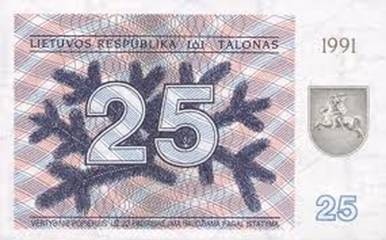
Text: Vincas Karnila, Associate editor
vin.karnila@VilNews.com
OK folks, the shoes will be 120
So that will be 80 Canadian Dollars and 80 Pound Sterling
How would you like to hear that from the cashier at you local shoe store the next time you are buying a pair of shoes? Could be a little confusing could it not? Believe it or not the people of Lithuania were hearing something similar to that in stores in the early 90s during the early days of their regained independence.
An interesting question pops up once a country gains, or in the case of Lithuania regains, its independence – What do you use for money???
With Soviet Russia’s forced annexation of Lithuania into the control of the Soviet Union, the currency of the country of course was then changed to the Soviet Ruble. Then On 11 March 1990 the re-establishment of Lithuanian independence was proclaimed and after fifty years of occupation, Lithuania was once again a free and independent republic. Obviously to be once again a free nation is a good thing but there was one factor that needed to be addressed – There was no “Lithuanian” currency!
Now of course it would be rather difficult to create a currency in one day so this could turn into a big problem in a short amount of time. So what did Lithuania do 12 March 1990? They continued to use the Soviet Ruble as there day to day currency. Now in some instances, for a country that just regained their independence to continue to use the country’s currency they just proclaimed their independence from would possibly work out OK and not present too many problems. This would be the case if the regaining of independence had taken place in a rather friendly way and as a part of a mutual agreement.
This was not the case between Lithuania and Moscow. Moscow was ticked off big time about this so every day that went by that Lithuania continued to use Moscow’s Ruble for its day to day buying and selling of things put Lithuania in a position of potential extreme financial disaster.
While the Soviet Ruble continued to be used, in early August 1991, as a response to public complaints about inflation, the Lithuanian government introduced the Talonas (Talon in English). It should be noted that the word “Talonas” is in the singular and is best translated to “coupon”. In the plural form it is “Talonai”. Prime Minister Gediminas Vagnorius spearheaded this action hoping it would work as a quick repair until a formal currency could be established.

Prime Minister Gediminas Vagnorius
At first, it worked very similar to ration coupons. Every person received 20% of their salary in Talonai, up to a maximum of 200 Talonai. In order to buy goods other than food, a person must have paid the same price in rubles and in Talonai. For example, if a pair of shoes cost 50 rubles, a person must pay 50 Rubles and 50 Talonai to buy them. Sound a little confusing? It was. Please keep in mind that people’s wages were still being paid in Soviet Rubles at this time and you were still paying for things in stores with Soviet Rubles.

This system was widely criticized. First of all, in no way it addressed the reasons why there were shortages of goods in that it did nothing to increase the supply. What it also did was make it more difficult to buy many items. As an example, the purchase of expensive goods such as home appliances dropped sharply because people needed a lot of time to accumulate the necessary amount of Talonai to buy them.
Remember you were paid 20% of your salary, up to a maximum of 200 Talonai but when you bought something, 50% had to be paid in Rubles and 50% in Talonai.

This caused bottlenecks in the supply chain and further damaged already troubled production. In addition, this scheme could not prevent the hyperinflation of the Ruble because the Talonai was not an independent currency - It was a supplementary currency with a fixed exchange rate to the Ruble. The system tried to encourage Lithuanians to save 80% of their salaries. But people accumulated their Rubles and had nowhere to spend them. It led to the inflation of goods that did not require the Talonas like food or goods on the black market.

I am told that this also created a Talonas/Ruble Black Market. Let’s say that you had a stack of Rubles sitting on the table that you could not use to buy a TV or washing machine because you didn’t have enough Talonai. So what you would do is find a person that would exchange your Rubles for Talonai. Now the exchange rate was absolutely absurd but the Rubles were doing you no good what so ever and were effectively worthless for what you wanted to use them for so the exchange rate was not a point of consideration. You were very happy to dump the effectively worthless Rubles for the amount of Talonai you needed to buy your TV, washing machine or refrigerator. Apparently the Black Market agents had a way to dispose of the Rubles outside of Lithuania in exchange for things of value.

From all this you can kind of get the idea that the “First Talonas Reform” wasn’t working out as some people had hoped it would – Please notice that I’m being very kind in my choice of words. So what would you say if I told you that even though an official Lithuanian currency was now in position to be introduced that would cure all this, the decision was made instead to enact a “Second Talonas Reform”. That’s right folks it just keeps getting better.
In the summer of 1992, everybody was waiting for the Talonas to be soon replaced by a permanent currency, the Litas. Due to Russia tightening its monetary policy, Lithuania was desperately lacking cash. In fact it was getting so bad that some workers were paid in goods rather than in cash. Even though the Litas coins and banknotes were already produced and had been shipped to Lithuania from abroad, on May 1, 1992 it was decided to reintroduce the Talonas as an independent, temporary currency to circulate alongside the ruble in hopes to deal with inflation. Yes folks this was the “Second Talonas Reform” creating again a dual currency system. On October 1, 1992 the ruble was completely abandoned and replaced by the Talonas. Lithuania was the last of the Baltic states to abandon the ruble. The self-imposed deadlines to introduce the Litas were continuously postponed without clear explanations ever being provided to the people of Lithuania.

The Talonas had some interesting names attached to it, "Vagnorkės" or "Vagnoriukai" named after Prime Minister Gediminas Vagnorius or "zoo tickets" after various animals native to Lithuania featured on the notes. The Talonas did not gain much public trust or respect. The banknotes were small and printed on low quality paper. People were reluctant to use them. Nevertheless, the Talonas served its purpose since inflation at the time was greater in Russia than in Lithuania. Inflation in 1992 rose steadily due to an energy price spike after Russia increased oil and gasoline prices to world levels and demanded to be paid in hard currency.

Now some would ask why since the “First Talonas Reform” really didn’t work out as well as hoped for – Again please take note of my kind choice of words - and why since the Litas bank notes and coins of the new official currency of Lithuania were sitting in Lithuania, would the powers to be decide to enact the “Second Talonas Reform”. Actually there were some reasons. One reason was that the banknotes were of extremely poor quality and could be easily counterfeited with a color photo-copying machine. Another reason was rather serious. For Lithuania to introduce its own currency that would be recognized internationally they needed to have a reserve equal to 200 million U.S. Dollars. This reserve could be made up of precious metal such as gold and silver and/or the currency of another country. At this point in time they could only assemble a total reserve of 120 million so they need more time to work this out.

But as the expression goes – All “good” things must come to an end. There was no “Third Talonas Reform” and on 25 June 1993, the Litas was introduced as the official currency of the Republic of Lithuania. With the Litas now in place as the official currency of the Republic of Lithuania, the people could now exchange their Talonai for Litai. The exchange rate was 100 Talonai = 1 Litas.
With this exchange of Rubles to Talonai and then Talonai to Litai two interesting things came up. First, what happened to all the now worthless Talonai that were exchanged for Litai? They were gathered all up from all the corners of Lithuania and brought to the city of Grigiškės which is near Vilnius on the A1 Highway to Kaunas. There at the Grigiškės Paper Factory they were recycled into toilet paper. I will not further comment on this but I will just allow your imagination to go to work to get an idea of all the jokes that came about as a result of how the Talonas met its final demise.
The other situation that came about was from the exchange Rubles to Talonai and it was quite unfortunate for some people. About a year ago I was visiting with some people and the topic of the Talonas came up. It was really a light hearted conversation with much laughter about all the odd things that were going on at the time as a result of the Talonas. The man of the house, who is in his 70s got up from the table and then returned a few moments later with a stack of banknotes that was about 9 inches / 20 cm. tall. I must admit that my jaw dropped when I saw this stack of banknotes sitting on the table. Then he looked at me and with an anguished smile said “worthless, all worthless”. He further added that during “Soviet Times” this would have been enough to buy six cars but now he can’t buy a potato with it. The stack of banknotes was all Soviet Rubles.
This situation was not that uncommon. What happened was that even though the people were extremely happy to have their independence and freedom from Soviet Russia some of them thought that it was just too good to be true. They felt that the possibility of a tiny country like Lithuania being able to just walk away from a world super power like the Soviet Union without any repercussions was quite unlikely. They felt that once Russia took care of their matters back home they would be back in force and once again invade and occupy Lithuania. So what some did was hold on to as much Rubles they could justify thinking that when Russia returned the Lithuanian currency would then be worthless but still they would have stashed away Rubles that they could use. In the mean time, the exchange period of Ruble to Talonai expired and they were left with a stack of worthless paper.
So the next time you think about inflation, growing petrol prices, food prices going through the roof, education costs increasing and the ongoing climb in taxes just be thankful that you can pay for it all with the same currency. Not like what the people of Lithuania had to do in the early 90s and figure out based on what day of the week it was which percent of what to use to pay for this and what percent of what to use to pay for that and how much longer can I use this to pay for that until I need to exchange these to that to pay for those.
- Bookmark :
- Digg
- del.icio.us
- Stumbleupon
- Redit it
Thank God for Lithuania!
- Posted by - (1) Comment
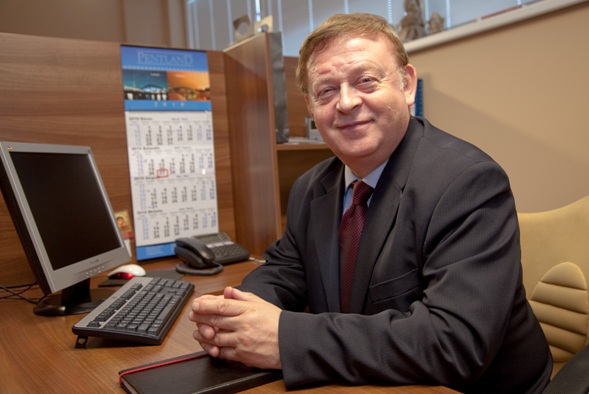
David Telky, Managing Director of Scottish-Lithuanian manufacturing company Pentland, has over 35 years in the clothing manufacturing industry. David was born in Glasgow, Scotland where he has carried on the family business of 90 years to present.
A personal thank you note to Lithuania from David Telky, Scotland
The above quote took over 30 years to occur. It covers activities in 14 countries and many years of garment production around the globe.
My background was in accountancy, but when my father, a tailor, phoned me to return to Scotland to help him start a large factory, I needed no second request.
Accountancy could not stand up to the thought of working with my father, starting a new factory and working in a manufacturing environment that had been a family trade for generations.
Two years later, after my training was over, the factory we designed was completed and my theory was to be put into practice.
To finance the project, at a very stormy time in the British economy, took every penny that we could beg and borrow but the beautiful factory was ours (and the banks) and now we had to staff and provide orders for its production.
10 eventful years later, sadly after my wonderful Father died, the factory had expanded to 450 people and was making 10,000 jackets a week, but customers were moving to overseas production, mainly from China!
This was when the stresses of running a large enterprise in Glasgow bore the health problems that many find the hardest part of business management. The long hours the mental strain of multiple problems, the financial pressures, the staff aggravations.
The answer was to do what all similar enterprises in UK were looking at and out source production, but where?
Over the next 5years,after successful forays into China, Indonesia, Sri Lanka, Turkey, Poland ,Portugal, Belarus Egypt and a few not so successful, I found the right place, Lithuania- my search was over!
The stress of all this had seen me in hospital with health problems, that linger to this day, so the expression "thank God for Lithuania ...without it I could be dead!" evolves from the joy of working with some of the best staff I have ever employed, combined with some of the finest and most loyal factories producing excellent products with an almost old fashioned loyalty and ethic that was so prevalent in the UK of my youth.
Altogether the move to Lithuania has not only been a work influenced move but the social aspect of the community of local and expats has opened my eyes to a life of harmony and peace that I thought was lost forever and fills me each day with happiness.
So Thank God for Lithuania in it's helping me develop not only a great company Pentland , a sum of it's fine employees ,but for giving me the chance to meet so many great and wonderful people not least the Editor of this fine Journal, Aage Myhre ,who I am honoured to count as my good friend .
May I say that the journal that Aage has developed tirelessly over many years is a fine demonstration of his love of Lithuania that I am proud to share with him!
Good luck to Vilnews and to you my friend Aage Myhre!
| Pentland Pentland is a Scottish based Clothing Manufacturing company headquartered in Glasgow with its production sites in Lithuania, Belarus and Moldova. Pentland has been manufacturing tailored clothing in Glasgow since 1973 and moved its production to Eastern Europe in 1985. Pentland produces for the European market for leading fashion retailers delivering tailored outerwear for men and women, with over 40 factories in Lithuania and neighbouring countries. David Telky, Managing Director of Pentland has over 35 years in the Clothing Manufacturing industry. David was born in Glasgow, Scotland where he has carried on the family business of 90 years to present. David participates hands on in his manufacturing companies from sales, production to delivery – producing fashion garments for the British and other western markets. |
- Bookmark :
- Digg
- del.icio.us
- Stumbleupon
- Redit it
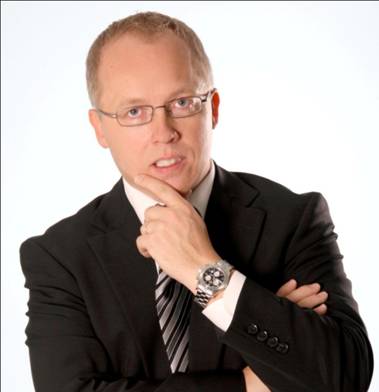
Palle Gravesen Jensen
A Danish expat to Lithuania, owner of two manufacturing companies, Electronic House and Metalco Baltic. Member of the board of the Danish Chamber of Commerce (DCC) in Lithuania. His family was one of the three families founding the Vilnius International School.
Text: Palle Gravesen Jensen
There are a number of issues to discuss with regards to Lithuania of today, the country I made my own 16 years ago, moving from my homeland Denmark.
One particular question, however, comes to my mind again and again: What is this country going to live on 20 years from now. It is a big question. My concern is there will not be much at all if nothing is done immediately.
Start with innovation
At DCC (Danish Chamber of Commerce) we recently took an initiative on innovation, by organizing an international conference, to try to understand whether there are creative products, ideas, businesses in Lithuania that could have potential export value. Because it is from innovation the real economic and income growth must come.
Let us not confuse the concepts of innovation and entrepreneurship. Entrepreneurship is about starting up businesses, not creating something. I myself am not an innovator, I am an entrepreneur.
Though from my earlier experience in Denmark I know that a lot of industries are driven by innovations. But there is a long pipeline: there has to be a favourable environment, starting from the education system. It also has to become socially acceptable to be an innovator – and to fail – because most innovators do fail, only a few pass through that little opening to success. When they do succeed, industries start building around them. This takes time, some 20 years, so if we in Lithuania want to be there in 20 years, we must kick off this innovation process today.
Why would innovators be socially unacceptable, one could ask? Well, I often hear people here saying: “I know this guy, he tried this and that, and he failed. What a fool! We could have told him that he would.'
Such an attitude kills innovation here. In the U.S., on the contrary, if you fail three times and succeed at the fourth attempt, nobody talks about those three attempts; they are simply seen as a maturing process leading to success in the end.
Today, Lithuanian biotech and laser firms are quite innovative, but I see no wide base for innovations to spread within these fields, not enough skilled engineers, plus a lot of barriers for foreign professional specialists to come here.
Politically I do not see a big wish to invite engineers from India, China or the U.S., there is no system to facilitate such exchanges, like the ones we have in Denmark.
I’ll leave Lithuania if progressive taxation is introduced
There are a lot of entrepreneurial start-up firms with staff of one to five persons here in Lithuania. I like that. What I do not like is that these entrepreneurs – and I know quite a few of them personally – are very proud when talking about how much taxes they avoid paying. A lot of their cash flow is black money.
That is my opinion like cancer to the entrepreneurship base. I find it very short-sighted that their main goal is to collect as much income as possible over the shortest time possible. Their business will never have any real value, and their growth potential will remain weak.
The fact is that taxation in Lithuania is fine. But the government should not push it harder, and not introduce progressive taxation.
If the progressive taxation system will be introduced, I would leave Lithuania instantly, and I know more businessmen would do the same.
I know of a specific case where a EUR 3m FDI investment project in IT services recently turned away from Lithuania and instead heading toward the other two Baltic States – only because the progressive taxation debate started here.
We have progressive taxes in Denmark. It is working but it is a mess, and there is no way back to a flat system. The biggest fault with progressive taxes is that one is being taxed so badly on the last part of the income that one is losing the motivation to do an extra effort. And innovation is a lot about that extra effort.
Barclay Bank’s ‘investment’ is a bad example of how to attract FDIs
I think the government’s support of the recent Barclay Bank’s investment here is a very bad example of how to attract FDIs to Lithuania.Their investmenthas nothing to do with innovation. They hire relatively inexpensive local IT staff, drain the local IT firms of talented young staff, and push salaries in the market up. It may be a flashy thing for the government to show to the world, but does Lithuania want to be a big back office, nothing more?
I know entrepreneurs from a few small IT firms here. They are crying their hearts out because their young software engineers, who had ideas and still being open-minded, opted for a higher salaries and safer jobs with companies like Barclays instead of staying with entrepreneur-innovator type of employers.
On the other hand, there is no support from the government to foster innovation in traditional manufacturing sectors, no effort to develop industrial parks suitable for innovative companies. There are a few so-called valleys in development for IT and biotech firms. But traditional industry is the base. Once innovations are developed, they will need support from traditional industry.
This government’s inactivity
Due to this government’s inactivity, we at DCC recently started developing clusters for various sectors, such as energy efficiency and innovation. These are not internal DCC initiatives – we only provide a launch pad for such ideas that we believe will develop on their own. But it is surprising that such initiatives do come not from Lithuanian organisations.
In general, Lithuania needs to make a real strategy for the next 10-20 years that would cover such fundamentals as education, infrastructure and social welfare.
Lithuania’s role as sub-supplier is coming to an end
Lithuania industry is today to a high degree a sub-supplier to Western industries, but this is a trend that soon will come to an end. My two companies are sub-suppliers, and every day I am doing my best to add value in all possible aspects – engineering, logistic solutions, warehouse management; taking over greater responsibility financially from our partners. Because if I am not able to adapt to the new times and challenges, then the only next step, at least in my industry, is to leave and find another country for my production activities.
I know for sure that exactly this will happen if we do not promote innovation. I myself do business with export markets, my clients are global innovative companies. I am very focused on getting my hook out on globally listed companies, such as 3M and ABB that are among my clients.
Sometimes such clients come themselves. We are, for instance, now starting to work with a new such company that has learned about us from the company Bombardier which we already are a supplier to.
90% of new business leads for my companies are generated by word-of-mouth advertising. For the first time in ten years we will now soon participate in an exhibition in Denmark.
EU funding systems do not work properly
Right now I am applying for EU aid to support our participation, but during the last couple of months I was very close to giving up. Because the system is not working. The aid agency is bureaucratic. The aid programmes are in constant change. Aid seekers have to spend big resources to adapt to the programmes instead of having programmes that are adapted to industry needs.
At the end of the day, this aid turns out to be twisting papers, moving money around, while the effect is minor.
In comparison, in Denmark a lot of aid money was injected into disadvantaged regions where we had structural problems like high unemployment rates and lack of jobs.
A good example is Vestas, the world's biggest wind mill turbine manufacturer. The company was established in one of those disadvantaged regions, and the EU money was invested in the development of local infrastructure, helping Vestas to attract skilled engineers and build a whole industry.
Increasingly complicated to find skilled labour
Internal training used to be enough to get skilled enough labour in this country. But now, as we would like to employ engineers with specific skills, I feel that this becomes rather complicated. I have talked to professors at the VGTU technical university in Vilnius and was told that engineers with such skills are not to be found here. So I am even considering filling these positions with Danish staff. I did employ welding engineers from Denmark before the crisis because the local market was drained. One reason was labour emigration, another one was that a lot of skilled employees went into the construction business to make quick money. So for a slightly higher salary I actually hired employees from Denmark with exactly those specifications that I needed. They would fly in, work for a week, then fly back home, then fly in again, and so on for some months.
In general, the government in Lithuania should put more focus on re-educating unemployed people. Another thing that could be done is to give a different status for those who simply are not fit to work – I have had such people sent to my companies by the local labour exchange. They should not be listed as available workforce.
I support the government’s plans to raise the minimum wage. When we hire blue-collar staff to do work that requires no specific skills, we start with a minimum wage of LTL 800 gross for the test period. If the wage is raised to LTL 1,000 as is debated today, it would put pressure on wages of all employees because skilled employees would then earn relatively less and demand more for their skills.
Therefore, the government should consider raising the tax-exempt minimum in order to raise the living standards. If the government is worried about budget revenue, means of collecting it are many but taxing labour too much is the worst path to follow.
I voted for Arturas Zuokas as Mayor of Vilnius
In the recent municipal elections here in Lithuania, I myself voted for the man who has now been re-elected Mayor of Vilnius, Arturas Zuokas. I know his background, I know all the negative stories about him but I think you could hear similar stories about most of the people in power here in this country.
As background for my choice I decided to focus on how the latest Vilnius Councils have been performing. The former council was simply sitting there waiting for the crisis to end, during a period when I believe there should have been made a lot of dynamic moves.
Vilnius was falling apart, and now needs the energetic guy back. Some of Zuokas' decisions will be wrong, some may be questionable, but there will be other decisions that will again push Vilnius forwards to a better future. Such as a metro system and a new airline for Lithuania.
I also hope that our government will take initiatives similar to those I believe Zuokas now will be taking, and that there finally will be serious focus on innovation as a basis for further development of Lithuania.
I would love to see a Lithuania that prospers today as well as in 20 years!
(This blog is based on an interview I gave to the business publication ‘news2biz’ in June 2011.)
- Bookmark :
- Digg
- del.icio.us
- Stumbleupon
- Redit it
DnB NORD allows criminals to use the bank
- Posted by - (1) Comment
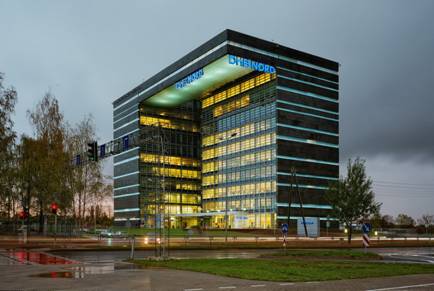
A new research study notes that only a small number of banks are willing to knowingly process what the industry calls "high-risk" transactions. In fact, just three banks, Azerigazbank in Azerbaijan, DnB NORD in Latvia and St.Kitts-Nevis-Anguilla National Bank in the Caribbean, provided the payment servicing for over 95 percent of the spam-advertised goods in the study. Norwegian DnB Nor owns the subsidiary DnB NORD bank in the Baltic States.
“Want to stop junk email? Block payments to spammers,” a new study tells. Researchers who have examined spam supply chains, find cutting off payments is the most effective way to stop influx of nuisance emails
Every day, people buy goods via automatic generated junk mails that offer cheap viagra pills, copies of art works, software, fashion clothing, medicine, fake handbags and everything else of illegal goods that can be obtained via the Internet. And people are buying lots of illegal and pirated goods, through criminal systems that have become a billion dollar industry.
In a new report by 15 scientists at Berkeley, San Diego International Computer Science Institute and the Budapest University of Technology and Economics appointed three banks as the main culprits.
The research notes that only a small number of banks are willing to knowingly process what the industry calls "high-risk" transactions. In fact, just three banks, Azerigazbank in Azerbaijan, DnB NORD in Latvia and St.Kitts-Nevis-Anguilla National Bank in the Caribbean, provided the payment servicing for over 95 percent of the spam-advertised goods in the study. Norwegian DnB Nor owns the subsidiary DnB NORD bank in the Baltic States.
The researchers even went as far as to purchase spam-advertised goods in order to find out who the payment processors are. Finding a way to stifle the operations of a payment processor would be a much more disruptive action than domain blocking, the researchers note.
"It is the banking component of the spam value chain that is both the least studied and, we believe, the most critical," researchers state in the paper. "Without an effective mechanism to transfer consumer payments, it would be difficult to finance the rest of the spam ecosystem."
"The replacement cost for new banks is high, both in setup fees and more importantly in time and overhead," the paper states. "Acquiring a legitimate merchant account directly with a bank requires coordination with the bank, with the card association, with a payment processor and typically involves a great deal of due diligence and delay.
The onus to stop payments would ultimately be on Western banks, the researchers conclude.
"If the U.S. issuing banks (i.e. banks that provide credit cards to U.S. consumers) refused to settle certain transactions (e.g., card-not-present transactions for a subset of Merchant Category Codes) with the banks identified as supporting spam-advertised goods, then the underlying enterprise would be dramatically demonetized. Furthermore, it appears plausible that such a "financial blacklist" could be updated very quickly (driven by modest numbers of undercover buys, as in our study) and far more rapidly than the turn-around time to acquire new banking resources - a rare asymmetry favouring the anti-spam community."
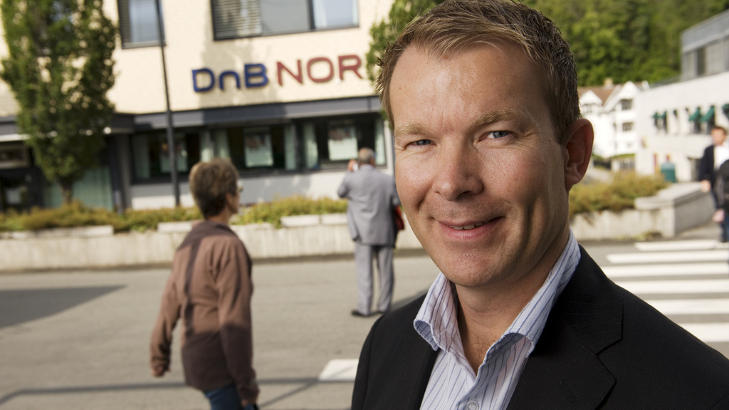
Information Director of DnB Nor, Thomas Midteide, admits to Norwegian DAGBLADET that DnB NORD has had problems with spam-customers. Photo: DNB NOR
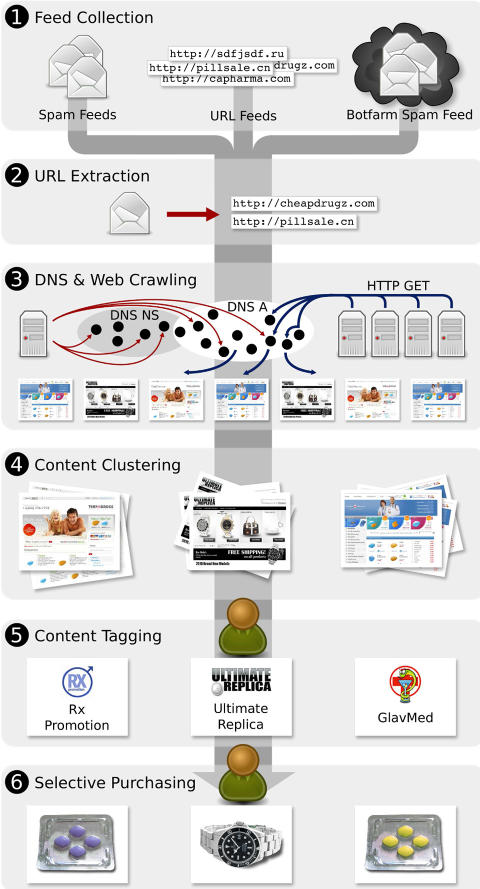
In the work, the scientists followed the money, receiving spam from around theworld, making over 100 purchases for three months and found that three banks account for 95 percent of all waste transactions.
Illustration from the report.
Has thrown out spam customer
- This is as far as I know a group of students who completed about 70 transactions, and so on which banks were clearing bank. One of the banks that came up was thus DnB Nord, "says information officer of DnB Nor in Oslo, Thomas Midteide, to Dagbladet.
He admits that DnB NORD has had problems with spam-customers.
- We took over the Latvian bank in the New Year. They previously had a customer who had his share of the cash flow from the spam-related activities. This customer was terminated before we took over the bank, and is therefore not a customer of the bank anymore, "Midteide. He says that the exchange amount that went through this account was not big.
- Spam is a big problem for everyone using electronic channels, and we in the banks must also do our part to prevent this type of activity, "says Midteide to the newspaper.
China, India, USA and New Zealand
All booking software and 85 percent of medication orders used the correct Visa category code that identifies what is sold. The reason for this is that they can get huge fines from Visa when they put the wrong code to hide the fact that they are selling risk goods.
The sale was completed by 13 providers in four countries: USA, India, China and New Zealand. Most of the drugs came from India, most herbal products came from the U.S., probably because of weak regulation of this market in the U.S.
In order to stop selling fake goods researchers suggest that the attack on the infrastructure for payment. The options are few and switching infrastructure costs a lot. They suggest that the U.S. stock rules that make it illegal to carry out transactions for known sellers. They write that it is not working very helpful to keep track of suppliers of illegal goods.
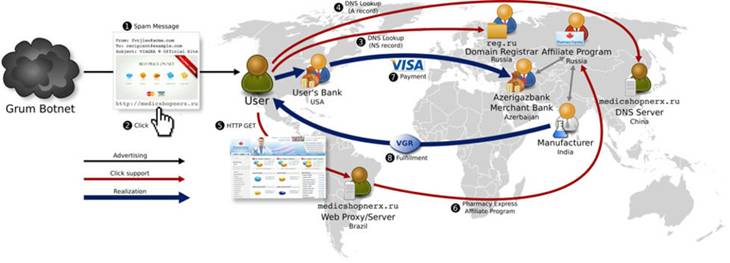
The infrastructure of a single chain URLs in the spam world.
Illustration from the report.
- Bookmark :
- Digg
- del.icio.us
- Stumbleupon
- Redit it
New name, new logo
- Posted by - (0) Comment
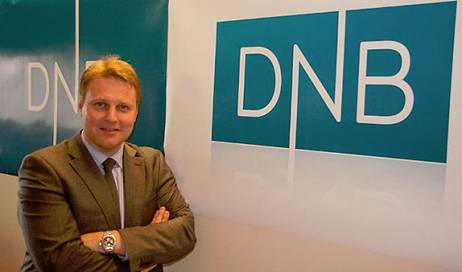
Communications Director Trond Bentestuen of DnB Nor showcases the new logo. The logo costs around one million euro.
Norwegian Snøhetta Architects have designed the large bank's new logo. Now the bank to will use around 20 million euros to change profile.
In November, the bank will change its name from DnB Nor to only DNB.
The management of DnB Nor group decided last year to collect and facilitate the company's brand. The name should be cut in half, and the Norwegian Post Bank and Vital insurance to be placed under the new name.
- Bookmark :
- Digg
- del.icio.us
- Stumbleupon
- Redit it

Lithuania was very pleased and grateful when Norwegian Telecom installed a satellite telephone station in the Lithuanian parliament, making it possible for Landsbergis to stay in touch with the world when the Soviets re-invaded Lithuania in 1991. But the country did little to hold on to Telenor and other Western investors. "We don’t need you," said former president Brazauskas.
Aage Myhre, Editor-in-Chief
To attract more foreign investors is often held up as a good way for Lithuania to follow – in order to achieve a more viable development, raise living standards and develop a more democratic, less corrupt society.
I began my personal efforts to assist Lithuania exactly 21 years ago, when Parliament President Vytautas Landsbergis announced that he would come to Oslo, on his first so-called official visit to a western country. I and a handful of others were ahead of his visit contacted by a presidential advisor and asked to put the best possible conditions for Landsbergis' visit to my home country Norway. That was how my long relationship to and with Lithuania started...
Landsbergis’ visit to Oslo became a great success and our group was therefore soon thereafter invited to visit Lithuania.
One thing that we put the most of emphasis on, already when Landsbergis was in Oslo the summer of 1990 and during our group’s initial visits to Lithuania, was to invite serious Western investors here.
Already during my very first visit here, in November 1990, we brought with us a representative of the governmental Norwegian oil company STATOIL, introducing the company to the Baltic States.
Just two years later STATOIL began developing the now well-known network of petrol stations across the Baltics and Poland. Our main contribution to STATOIL that time was to introduce them to representatives of governments, organizations and individuals we thought might be of help. The last substantial roles I had for the company was as an architect and facilitator of their offices here in Vilnius in the early 1990's, and to advise them when they later met on corruption and other problems.
During my first visit to Vilnius I also negotiated a contract with Lithuania's communications minister, based on an agreement I had with the Norwegian Telecommunications Administration to provide a satellite telephone station as a gift to Lithuania, and to install it in the parliament here, Parliament President Vytautas Landsbergis had asked our group of ' Lithuania-helpers' about this support when he was on a visit to Norway the summer of 1990.
Not long after this satellite telephone system turned out as very useful when Soviet troops re-invaded the Baltic States and cut all other calling options with foreign countries.
As a 'thank you for your help' the Norwegian Telecom was offered to create the first network for mobile phones here, but they rejected because they thought the market here was too small. They were also very tired of the treatments they were given by local bureaucrats.
I remember that this deeply disappointed me and Telecom's export director, who I worked closely with for the above mentioned satellite station in 1990-1991, and later on when we both tried to position the Norwegian company in the Baltics.
During the years that followed, I invited and tried to set stage for a number of Western investors. Some of them accepted, and some are still in full operation and business here today, very successfully!
What I quickly discovered, already two decades ago, was the importance of having a good personal contact with representatives of those companies, speaking ‘their language’ and to help them with many different problems and challenges in this misguided country where Soviet laws, structures and modes of action was still largely in force, and corruption a very widespread phenomenon.
I also understood that it was very important to offer ‘concepts’ not just ‘projects’ and investment objects to new investors.
Unfortunately, I seldom saw true understanding and interest from the Lithuanian authorities during those years. Even the largest and most serious firms were most often met with a shrug. "What's in it for me personally," was the question that was often presented when we contacted representatives of local authorities and businesses.
I will never forget when I in 1995 had lunch with Chicago’s largest builder, in the Neringa Restaurant here in Gedimino Avenue, a Lithuanian-American who had returned to Lithuania four years earlier, full of optimism and dreams of a restored home country. The day he left he told me: “Aage, let me tell you frankly that they have all cheated me. I invested into business, production, a hotel and more. But they all cheated me – from the highest of politicians to the simplest of workers. I am sick and tired of seeing how these people have ruined my homeland, and I’m now leaving it all behind. I will never again put foot on the soil of the country I dreamed of and supported for all my lifetime.”
I will also never forget that Lithuania's president and leader through much of the 1980s and 1990s, Algirdas Brazauskas, by then made it clear that Lithuania did not need foreign investments.
"We have enough money in this country, among our own investors and companies. We simply need no foreigners here," he said…
One could perhaps have thought that today's leaders would had learned, but the fact is that neither expatriates living here nor people within the country’s own diasporas around the world are much asked for help, advice or contributions. And when the authorities ask, they often ask the wrong people and institutions.
Let me, finally, also share with you a passage from Steven Levy’s book “How Google Thinks, Works and Shapes Our Lives”.
President Brazauskas' attitude and the following description explains a lot about why both and Lithuania are still living in a European backwater. Another sad example of how little the leaders of these two countries understood by then – and very often also today...
Here’s what Steven Levy writes:
“Google also made a priority to build centers overseas. Not long after she found the location in Atlanta, Cathy Gordon went to Europe, where Google wanted to build a giant data center similar to the one in the United States. Google had studied the laws and business practices of every country and narrowed the field to a few that might be able to provide the power and water required, as well as a friendly governmental hand. Some of the proposed locations were predictable – Switzerland, Belgium, France – but a couple were not.
One of those were Latvia, which Gordon had never visited before. The Google team flew into a ramshackle little airport and met the economic development committee, a cadre of what seemed to be stereotypical Soviet bureaucrats. Their host escorted them to the potential data centre site, an abandoned Soviet minibus factory. The building was cavernous and gloomy. In the centre of the building was a giant pit, and Gordon could not help but wonder whether any bodies were quietly decomposing in the stew. The group went to the area where the power facilities were located, and it looked to Gordon like they were on an old horror movie set, a ‘Gulag Archipelago’ version of Dr. Frankenstein’s lab. One of the hosts leaned over and spoke in a confidential whisper, heavy with Slavic accent. “Don’t go to near those things,” he said. “Basically we don’t know if they could kill you.”
“We eventually ended up doing a deal in Belgium,” says Gordon.
- Bookmark :
- Digg
- del.icio.us
- Stumbleupon
- Redit it
Lithuania is the most attractive country for international companies looking to invest in the region of the Baltic States, the latest 2011 European Attractiveness survey from Ernst & Young shows
- Posted by - (0) Comment
![]()
“The number of projects has increased from 33 to 61 with Lithuania leading the region, with 31 project announcements. Investors come to the Baltics to invest in air transportation (25 %), financial services (12 %) and utilities (10 %). These countries are re-emerging as lower cost near-shoring locations with a quality workforce on the doorstep of Western Europe,” the survey reveals.
Ernst & Young’s 2011 European Attractiveness survey reflects Europe's real attractiveness for foreign direct investors, based on Ernst & Young's European Investment Monitor (EIM), as well as attractiveness of Europe and its competitors evaluated by a representative panel of 812 international decision-makers.
Follow to download 2011 European Attractiveness survey here.
- Bookmark :
- Digg
- del.icio.us
- Stumbleupon
- Redit it
- Posted by - (1) Comment
This can happen if or
when Greece falls

Photo: Dimitri Messinis / SCANPIX / AP
Despite the fact that Greece last year was allocated 110 billion Euros in crisis loan from the EU and the IMF, little has gone in the right direction for the embattled country.
More and more people believe that it is no longer question whether, but when Greece falls. Overall, Greece has total loans of 340 billion Euros.
Several experts expect a collapse in the next few days, writes Swedish Affärsvärlden.
Record Interest
Interest rates for the Greek government debt continues to rise this week, despite the fact that the government met to discuss yet another tightening package. The yield on ten-year government bonds rose to 16.8 percent, the highest level in the Euro zone’s history. The yield on two-year government bonds rose to 25.6 percent.
- There is much bad news out there. We have our doubts about the European cut plans, and its weaker economic data all over. The only thing that has pushed up the stock market is that the earnings season is now ending. It means that people will pull their money away from risk, "said Paul Zemsky at ING Investment Management told Bloomberg.
Refusing to accept the Greek government securities?
Several key players have said that banks will soon not accept Greek government securities as collateral. It will mean that the Greek banking system will be left without funding opportunities.
Economist and columnist Andrew Lilico on his blog made a summary of what he thinks happens when Greece, probably in the next few days, will be unable to meet its payment obligations.
Swedish Affärsvärlden says this is no reading for the timid…
British economist
It is when, not if

Andrew Lilico
Andrew Lilico’s predictions in ‘The Telegraph’:
It is when, not if. Financial markets merely aren’t sure whether it’ll be tomorrow, a month’s time, a year’s time, or two years’ time (it won’t be longer than that). Given that the ECB has played the “final card” it employed to force a bailout upon the Irish – threatening to bankrupt the country’s banking sector – presumably we will now see either another Greek bailout or default within days.
What happens when Greece defaults. Here are a few things:
- Every bank in Greece will instantly go insolvent.
- The Greek government will nationalise every bank in Greece.
- The Greek government will forbid withdrawals from Greek banks.
- To prevent Greek depositors from rioting on the streets, Argentina-2002-style (when the Argentinian president had to flee by helicopter from the roof of the presidential palace to evade a mob of such depositors), the Greek government will declare a curfew, perhaps even general martial law.
- Greece will redenominate all its debts into “New Drachmas” or whatever it calls the new currency (this is a classic ploy of countries defaulting)
- The New Drachma will devalue by some 30-70 per cent (probably around 50 per cent, though perhaps more), effectively defaulting 0n 50 per cent or more of all Greek euro-denominated debts.
- The Irish will, within a few days, walk away from the debts of its banking system.
- The Portuguese government will wait to see whether there is chaos in Greece before deciding whether to default in turn.
- A number of French and German banks will make sufficient losses that they no longer meet regulatory capital adequacy requirements.
- The European Central Bank will become insolvent, given its very high exposure to Greek government debt, and to Greek banking sector and Irish banking sector debt.
- The French and German governments will meet to decide whether (a) to recapitalise the ECB, or (b) to allow the ECB to print money to restore its solvency. (Because the ECB has relatively little foreign currency-denominated exposure, it could in principle print its way out, but this is forbidden by its founding charter. On the other hand, the EU Treaty explicitly, and in terms, forbids the form of bailouts used for Greece, Portugal and Ireland, but a little thing like their being blatantly illegal hasn’t prevented that from happening, so it’s not intrinsically obvious that its being illegal for the ECB to print its way out will prove much of a hurdle.)
- They will recapitalise, and recapitalise their own banks, but declare an end to all bailouts.
- There will be carnage in the market for Spanish banking sector bonds, as bondholders anticipate imposed debt-equity swaps.
- This assumption will prove justified, as the Spaniards choose to over-ride the structure of current bond contracts in the Spanish banking sector, recapitalising a number of banks via debt-equity swaps.
- Bondholders will take the Spanish Banking Sector to the European Court of Human Rights (and probably other courts, also), claiming violations of property rights. These cases won’t be heard for years. By the time they are finally heard, no-one will care.
- Attention will turn to the British banks. Then we shall see…
Andrew Lilico is an Economist with Europe Economics, and a member of the Shadow Monetary Policy Committee. He was formerly the Chief Economist of Policy Exchange.
Sources: http://www.dn.no/
and: http://blogs.telegraph.co.uk/finance/andrewlilico/100010332/what-happens-when-greece-defaults/
- Bookmark :
- Digg
- del.icio.us
- Stumbleupon
- Redit it
A more likely scenario is orderly restructuring
- Posted by - (0) Comment
|
|
|
By Nerijus Maciulis, Chief economist, Swedbank
The scenario described by Andrew Lilico is highly unlikely. Greece, Ireland and Portugal together constitute less than 6% of Euro area GDP – even if all of them restructure their debt at the same time, the effect will most probably be contained.
One of the reasons why ECB and European Commission keep resisting any kind of restructuring is to make sure that there will be no disastrous spill-over effects to financial sector. It is likely that ECB and EC are waiting for the results from bank stress tests before they take any decision on restructuring. But behind the closed doors there probably is a discussion on how to proceed with orderly and contained restructuring.
In case of the first (chaotic and contagious) scenario, the effects would be dramatic, despite Lithuania's weak links with euro area periphery. Increasing uncertainty and flight for safety would cause higher interbank interest rates and government borrowing costs. This would undoubtedly damage credit markets, which have not yet recovered from a previous blow. Lower confidence and higher interest rates would deter investments; consumers would increase savings and reduce spending. After global financial crisis the economy has adapted to different conditions and now households and companies are much less dependent on borrowed capital. However, current economic growth in Lithuania was mainly based on strong exports – a strong dent in foreign demand would slow down our recovery, if not cause another recession.
A more likely scenario is orderly restructuring (probably well before 2013, when European Stability Mechanism is introduced), which will cause some short-term volatility, but not significant damage to the real economy.
|
|
What could be the consequences for Lithuania if Greece falls? "Pretty little – we do not have any major exposure to Greece, not firm foreigh trade pattern. In default case, maybe Greece would become a top destination for vacation, which now is firmly taken by Turkey and Egypt." |
- Bookmark :
- Digg
- del.icio.us
- Stumbleupon
- Redit it
Imminent collapse of the Euro?
- Posted by - (0) Comment
![]()

http://www.thetrumpet.com/?q=8225.6887.0.0
Rates on Greek debt soared to an astounding 21 percent last week. The end game on the Greek debt crisis could be near. If Greece defaults on its debt, it could trigger a domino collapse across Europe. But do the strategizers behind the euro have a secret plan that could totally reform the union?
One thing for sure is that the Greek government cannot long afford to borrow money at such high rates. It is virtually locked out of the debt market. That means that sooner or later, somebody isn’t going to get paid. In this case it mostly means big banks in France, Germany, Austria and Belgium.
The consequences could easily go global. European Central Bank executive member Jurgen Stark warned on April 23 that Europe may be about to suffer a banking crisis worse than that of 2008. It “could overshadow the effects of the Lehman bankruptcy,” he warned.
Bigger than Lehman?
According to Stark, a default by Greece would be the worst option for the eurozone. This would trigger massive and immediate government spending cuts and the inevitable social unrest that would ensue.
More critically, it could easily cause lenders to balk at loaning money to other troubled states like Ireland and Portugal—causing interest rates to soar in those countries and causing them to default too. Even Spain and Italy could be pushed over the edge, which would throw the whole eurozone into question.
- Bookmark :
- Digg
- del.icio.us
- Stumbleupon
- Redit it
Lithuania’s impressive recovery continues
- Posted by - (0) Comment
![]()
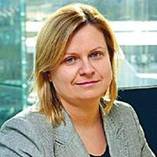
By Violeta Klyviene - Danske Bank
Today Lithuanian Statistics published the flash estimate of GDP growth for Q1 11. GDP unexpectedly accelerated to 6.9% y/y, significantly up from 4.8% y/y in Q4 10, seasonally-adjusted GDP increased by 3.5% q/q. The outcome was significantly higher than our and consensus forecast (5.1% y/y).
Details
Lithuanian GDP increased by 6.9% y/y in Q1 11, significantly up from 4.8% y/y in Q4 10. We expect the Lithuanian economy to grow by 4% y/y in 2011, but there is a clear upside risk to our forecast.
Assessment and outlook
The Lithuanian GDP outcome in Q1 11 was significantly higher than our and consensus forecast (5.1% y/y). Although detailed statistics have not been published yet, it looks like the Lithuanian recovery has become more broad based and was derived not only by robust export performance, but also by notable growth in private consumption. However, the impressive recovery was partially determined by the low base effect.
Regarding this year’s development we emphasise that growth might exceed our expectation (4% on average). However, Lithuanian quarterly national accounts data are characterised by significant corrections, so we are not changing our forecasts for this year until the publication of the final data for Q1 11.
The biggest risk to the economic recovery is still associated with the accelerated inflation, which is mainly determined by external factors and as a consequence cannot be handled effectively. Eurozone debt crisis risk remains relevant as well. Under the unfavourable scenario, Lithuanian will be unable to escape the negative effects of a full-scale sovereign debt crisis, but the economy fundamentally looks much stronger than a few years ago.
Otherwise such risk confirms the need to pursue fiscal consolidation targets in the medium term.
- Bookmark :
- Digg
- del.icio.us
- Stumbleupon
- Redit it
The Greeks won, the Lithuanians lost!
- Posted by - (2) Comment
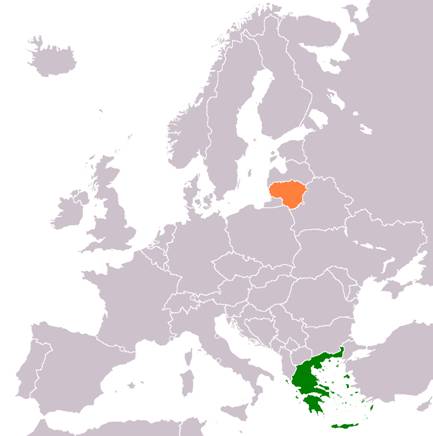
Before they realized what is going on and who was robbing them, the Lithuanian people got clubbered by PM Kubilius’ ambitious austerity policy and the younger ones started emigrating in catastrophic numbers, seeing no future in the country whose GDP was reduced (from a low post-Soviet level) by some 20% by the combination of the old nomenklatura rent-seeking policies and the global Great Recession. Lithuania is hollowing out, unfortunately.
Palemonas Legend: A Tale of Two EU Nations
Since the annus mirabilis 1989 the theory was that Central and Eastern Europe, CEE, would use its abundant and relatively educated labor force to grow faster and on a more sustainable and consumer-oriented (prosperity) basis due to shift to markets and euro-integration.
What got in the way is the theory of (rational?) expectations?
True, CEE did receive a sort of a very modest version of Marshall Plan from the EU. True to four EU freedoms, Western Europe is opening to labor movements (emigration) from CEE. So when new CEE policymakers were implementing liberal market reforms, they should have anticipated some outflows of labor force to higher bidders in Western Europe due to simple demonstration effect.
What got in the way is the law of unintended consequences in complex processes?
When the British opened their labor markets to the East, they anticipated some 10-12 thousand immigrants from Poland, for example, what they got is some one million and rising. Who knows what the figure will be when Germany opens this May?
The tale of two EU nations: What got in the way is the paradigm of hard-to-calculate policy externalities?
The current Kubilius Government of Lithuania adopted a very ambitious (no IMF help even sought!) and rather harsh austerity modeled on the reigning EU thinking in order to clean the Augean stable of Lithuania's finance wrecked fo by former Soviet nomenklatura hijacked governments that largely used EU money to place their cronies in plum jobs (to the exclusion of younger generation of course!), "prikhvatize" real estate and keep it from any taxation, etc. Consequently, Lithuania did not attract much Western direct investment so the productivity remained at low post-communist levels at the time when emerging Asia provides stiff global competition.
Before they realized what is going on and who was robbing them, the Lithuanian people got clubbered by this new ambitious austerity policy and the younger ones started emigrating in catastrophic numbers, seeing no future in the country whose GDP was reduced (from a low post-Soviet level) by some 20% by the combination of the old nomenklatura rent-seeking policies and the global Great Recession. Lithuania is hollowing out, unfortunately.
While the Lithuanians sobered rather in time, the Greeks have been continuing the party until the last bottle:)
Greeks won, Lithuanians lost! This is the tale of two integrating nations: they are even related since ancient times according to a Greek Palemonas legend.
Wishing you all the best, I remain
Yours Sincerely
Valdas Samonis, PhD, CPC
The Web Professor of Global Management(SM)
Institute for New Economic Thinking, New York City, USA
and Royal Roads University, Canada
Knowledge Management Editor, Transnational Corporations Review (TNCR)

Val Samonis, PhD, CPC, (val@samonis.com) has worked with top business, technology, and policy leaders in many countries, e.g. Nobel Laureates in Economics and Finance (Tobin, Arrow, Solow, Leontieff, Klein) as part of The Stanford Economic Transition Group; Polish Deputy Prime Minister L. Balcerowicz, Czech Deputy Prime Minister P. Mertlik; other top experts globally; lectured internationally on trade, investment, corporate governance/finance and enterprise restructuring, competitiveness, and ICT & knowledge management (KM) in the global economy; and has been extensively published.
He has been contributing research to The Joint (Business, Government, Academia) Committee on Corporate Governance (Canada); on FDI and knowledge economy clusters to Columbia University's VCC Center on Sustainable Investment; publishing at The Knowledge Board, the European Union's main KM think tank. Also, Val Samonis has been serving as a knowledge management expert in global business and advisor to a number of governments, international organizations, business, and academia on four continents; individually and via his virtual network organization SEMI Online (www.samonis.com) established since the mid-1980s.
Dr. Samonis managed and/or worked in international research and advisory ("blue ribbon") teams sponsored by The Business at the Bottom of the Pyramid Initiative (Cornell University and the University of Michigan); The African Capacity Building Foundation (G-7 countries and global institutions); The Virtual Consultation Forum for the First Inter-American Meeting of Ministers and High-Level Authorities on Sustainable Development; The Hudson Institute; World Bank; The OECD-World Bank Private Sector Advisory Group on Corporate Governance; USAID; CASE Warsaw; EU (ACE, TEMPUS); Soros Foundations; The Center for European Integration Studies (ZEI Bonn); ACCC/AUCC/CIDA (Canada); and a number of governments, e.g. in Baltic States, Poland, Canada. Dr. Samonis served as an advisor to the Czech Government, the Lithuanian Parliament, international organizations (e.g. UNCTAD, WTO, ITC), and multinational corporations (e.g. CARE, Medley Global Advisors, Andersen Consulting). Prof. Samonis has been teaching online, onsite, and his DualModeInstruction(SM) comprehensive and specialized courses, modules, seminars, training sessions, briefing sessions, occasional lectures, as well as doing research and supervising graduate (EMBA, MBA, MA, PhD, DBA) students at the University of Toronto (Canada), Royal Roads University (Canada), Lansbridge University (Canada, Asia), University of Maryland UC (USA), Center for University Studies (USA & Mexico), National American University, (USA and globally), Touro University International (USA and globally), Warsaw School of Economics (Poland), The International Trade Research Institute (Poland), University of Tasmania (Australia), The Center for European Integration Studies (Germany), Vilnius University and Kaunas University of Technology (Lithuania), The Baltic Management Institute (Baltic states), Kyiv University (Ukraine), and other institutions internationally. Last but not least, Dr. Samonis is one of the two founding editors of the globally acclaimed Journal of East-West Business (Routledge), and has been serving on review and advisory boards of many other international scholarly journals in business/finance/high tech.
- Bookmark :
- Digg
- del.icio.us
- Stumbleupon
- Redit it

THE WORLD LITHUANIAN ECONOMIC FORUM
VILNIUS 4 – 5 JULY 2011
There is over a million of people of Lithuanian origin living outside Lithuania. Having left their Motherland in different times and of different reasons they are now living and working in countries around the world. Many of them became successful businessmen: owners or managers of big corporations and companies or highly ranked experts in different fields.
Establishing of a closer relationship with Lithuanians living abroad should nowadays be one of the most important goals in the strategy of our government. The diasporas represent an invaluable source which can enrich Lithuania and help to create a better future of our country.
The goal of the World Lithuanian Economic Forum is to attract Lithuanian business people, economists, politicians and scientists from the entire world into Lithuania’s economic life of today, to strengthen their relations with Lithuania, to encourage them to develop business in our country, to help attract investments, to enterprising growing Lithuanian companies, to create a global network of Lithuanians from all over the world.
The Forum is organized by Lithuanian Business Confederation | ICC Lithuania in cooperation with a number of partners – governmental institutions as well as business companies.
The first Forum, named “Competitive Lithuania: innovative economy, effective business development and investment”, was organized in 2009 in Vilnius. In 2010 WLEF “High tech innovation & investment: local to global” was held in London. Both events got loads of attention from public and media. Following the traditions this year WLEF comes back to Vilnius and will be held 4 – 5 July.
The main theme of his year’s event is the creation of a competitive state. Experts, business people and scientists of different spheres from all over the world will discuss the vision of the world and Lithuania in ten years, the creation of competitiveness through innovations, a partnership between business and science, the encouragement of starting and growing businesses.
For registration and additional information, go to http://www.plef.lt/
- Bookmark :
- Digg
- del.icio.us
- Stumbleupon
- Redit it
The Magic goose
- Posted by - (0) Comment
by KR Slade
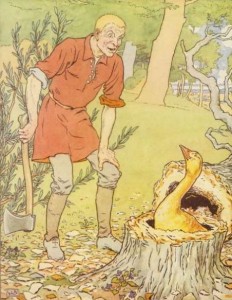
[Note: you may think that you are familiar with the story about the goose that laid golden eggs,
however, everything that you have heard -- or know -- is wrong !! For reasons of privacy and security,
personal gain, et cetera: the true facts of this matter have long-since been consigned to fable,
legend, minor morality, and other distortions: so as to ‘protect’ the truth . . . until now.]
Once upon a time, there was a man named Gus. This was a very, very LONG time ago... And, somewhere long-since forgotten.
We do not know where this story begins. Some sources identify England or France, or more-central Europe, or even the far- or near-east. ‘Where’ is not so important as to the origin, because (as you will see later), in our ‘modern age’ the essential ‘situs’ (i.e., place) becomes several places in the world, which explain why the source is attributed to more than one place.
We do not know ‘when’ this story begins, but a general reference of time being ‘ancient-’ or ‘pre-’ history is ascertainable by the very beginning of the story...
* * * * *
Gus was walking home, from a visit to his friend -- who had just invented cheese.
On the way home, Gus saw a goose. The goose followed Gus all the way home. Gus liked the goose; the goose liked Gus. The wife of Gus said, “Ah, a goose. Good. We will eat the goose tomorrow.”
The goose understood what the wife said, because the goose was a Magic Goose. Although the goose knew that it could not be killed, it wanted to be loved, and to have a good home. So, the next morning the goose laid a golden egg.
Gus was a very stupid man. He told everyone about the goose: about how it laid a golden egg every morning. Many people came to see such a great wonder, and Gus gave away many eggs.
The problem was that soon everyone knew about the Magic Goose . . . and also that Gus would always be rich. What to do? The answer was simple. Tell everyone that the goose was killed -- to see what was inside. Everyone would believe it. End of story.
This is NOT the end of the story . . . this is the beginning of the story . . . Gus was stupid, but he was not crazy. This is where our story begins . . .
* * * * *
Many centuries passed. The descendents of Gus continued the ‘family business’ of hiding the goose (usually in a flock of geese), saving the eggs, selling/loaning the eggs, and investing the ‘egg money’. The family’s eldest male, who also inherited the stupidity of Gus, always headed the family business. Running a golden-egg goose-laying business does not require a lot of brains; so, the company was successful, and the entire family was prolific, became very rich, and married into the best of other families. However, since the goose was a family secret, this is why today we have so many very rich families, and no one knows how they made their money.
More centuries passed. The family business financed all kinds of things: religions (notably competing religions, which was the best for the religions-business), building projects (e.g., the pyramids, Great Wall of China, many canals, etc.), wars (i.e., always both sides), royal successions / overthrows / assassinations, and just about everything important that has happened in the last few thousand years. One of the most profitable investments was a dozen eggs, used to finance Columbus, after Isabella had offered only to pawn her necklace and a ring.
* * * * *
Finally, we arrive at the second-half of the 20th century; this is the period for which we have the best records of the business. At the beginning of this century, the company had invested in banks; but all investment was lost in the stock market crash of 1929.
By the 1960’s, the company was running low on choices to spend their profit from WWII and the Cold War. Although the family were sceptical about re-investing in banks, it was explained to them that banks formerly ‘provided a service’, but now banks ‘sold a product’; so banking is now a new kind of business. In the coming decades, all of the distinctions between various kinds of banks would disappear, as well as distinctions between banking and investing and insuring.
The golden egg business was becoming somewhat complicated. There arose a need for a partner with special expertise. However, the partner-expert soon sold-out to an investment group, which soon sold to an investment-banking firm, which partially sold to another investment bank and partially created a ‘holding company’. Actually, it is impossible to count the number of times that the company was sold, because it would depend how you counted. Each time that there was a change of ownership or structure, there were the fees for bankers and lawyers, bonuses for the top executives, and to consultants who became famous.
In addition, there were new financial businesses. For example, one way of hiding the golden egg business was to create a company that ostensibly sold something other than golden eggs. So, a company was created to sell ‘derivatives’; which, although no one knew what a derivative was, enabled the new company to become so successful that it no longer needed the golden-egg business, which (once again) was sold. People would never believe in an actual golden-egg-laying goose, but were completely confident in the magic of derivatives.
In the 1970’s, another business idea cycle came into vogue: ‘the conglomerate’. The Magic Goose business entered the complete range of goose-related products and services: Guano Gold fertilizer, a museum and a theme park, public appearances, feathers, Golden-Goose Lake Resorts, Golden-Goose Mountain Ski Area, goose barnacle, goose hawk, gooseberries, goosefish, goosefoot, goose grass, and the highly successful (and patented) gooseneck. Eventually, there was a sell-off of the amalgamated industries and a return to the central/core project of producing golden eggs. The company president summed up, “We obviously overestimated the potential of synergies.”
This was the beginning of twenty years of ‘spin-offs’, ‘taking smaller units public’, ‘employee stock ownership programs’, ‘retirement shares investments’, ‘merging divisions’, ‘creating wholly-owned subsidiaries’, ‘splitting into independent companies’, ‘creating parent companies’, etc. Of course, the ‘business-side’ of the ‘capitalistic method’ was to produce and sell the golden eggs; but the ‘finance-side’ of the capitalists’ ‘strata_gem’ had nothing to do with a Magic Goose or the golden eggs. Thus, the descendants of Gus were completely eliminated from the business.
* * * * *
In 1985, the company was raided by the Federal Revenue Service, which determined that the records showed only 28 eggs output-per-month; the number of weeks in a month is 4.3, not 4. The company president, who had worked for many years without any apparent remuneration, was arrested for ‘grand-theft-golden-eggs’ and tax evasion. After serving 8 months, of his 10-year prison sentence, at a federal facility for white-collar criminals, he left the country and became the president of an offshore bank in the Caribbean.
The company itself was fined 5 million dollars, and all eggs in inventory were seized and forfeited as ‘proceeds of a criminal enterprise’. The company was placed in bankruptcy. The court-appointed trustee decided that there were few fiscal controls and professional management was required. The company hired a salaried president, who earned $725,000 annually [plus bonuses indexed to any rise (but not decline) in the price of gold]. The executive staff also came to include a chief financial officer, auditors, and a larger professional goose-care staff.
In 1989, the company president resigned to accept a position with the federal treasury department; his departure bonus was 1,000 eggs. The new president announced that the fiscal year, which ended on 1 April 1990, would show a big improvement over the previous year’s bottom line, after the application of ‘new accounting methods’. However, the re-stated financial statements showed that the company would still be ‘in the red’, for the fifth successive year.
The losses began with about $1 million in ‘unsubstantiated expenses’, under the administration of the previous president. It then cost $992,842.17: for lawyers, auditors, and accountants to help clean-up that which in accounting terminology is called ‘the mess’. After the scandal broke, annual revenues from royalties, sponsorships, admissions, donations, and events dropped by $10 million.
Unable to meet its expenses, the enterprise obtained a $20 million mortgage on its only asset: the Magic Goose. However, because of ‘market-forces’ doubt in the existence of a goose that lays golden eggs (even though the laying has been going on since before recorded history), the company was required to pay an ‘above-prime’ 18 percent rate of interest (compared to a market-rate of mortgage interest of 6%). In addition, there was the loan requirement of insuring the ‘life’ and ‘productivity’ of the goose, as well as the insurance on the market value of gold ‘futures’ during the term of the loan. The insurance expense added another 11 % to the cost of the loan. And, there was the additional cost of the bank’s on-premises observers, estimated at 5%, to ‘secure the collateral’. Although the total actual cost of the loan was 34 percent, this was not an ‘illegal rate of interest’, because, by law, the ‘loan expenses’ are not ‘interest charges’.
By the year 2000, the company had been acquired by an ‘agri business’. At first, there were some attempts to ‘clone’ the goose; but after 5 years of effort, the scientists concluded that they could replicate the Magic Goose, except for ‘the magic’. Also in this year was the potential scandal that the Magic Goose had not reproduced, and that domesticated geese can be polygamous. The solution was to photograph all of the ‘decoy geese’ always with little goslings. This ‘PR spin’ successful avoided the likely ‘sell-off of stock’ by major institutional holders, regarding the fact that some geese are long-term same-sex couples.
During 2001, the business completed its cycle of various plans: the ‘Business Turn-around Plan’, ‘Business Restructuring Plan’, ‘Business Profitability Plan’, ‘Business Cost-Cutting Plan’, ‘Business Research and Marketing Investment Plan’, ‘Diversification Plan’, ‘Consolidation Plan’ . . . et cetera ad infinitum. Each plan had been ‘successful’: in that it raised the price of company stock for one (1) day, which enabled the management to sell some stock at a much higher-than-normal price.
The year 2002 saw the trial of the ‘sales leaseback’ concept: sell the goose, then ‘lease it back’; in order to realise the ‘dead capital’ in the goose, capital that can be used to support and invest in further growth and progress of the ‘core business’. This effort was abandoned when the company mistakenly bought the company to which it had sold the goose, thereby paying to lease something that it already owned.
In 2003, there was a far-more-scary development: ‘Mad Goose Disease’. In order to lower the cost of goose feed, the agri-business owner had begun mixing ‘goose body parts’ into the goose feed. Naturally, this was a problem because geese are vegetarians, although the domesticated variety will try anything. All of the geese on the farm went ‘mad’, and had to be destroyed. However, the Magic Goose was unaffected, because it cannot die. As a precaution, the diet for the Magic Goose was changed to ‘all-natural veggie’, since the cost-savings, of using the animal parts, had produced a ‘savings’ of only 3 cents per month.
In 2004, there was the ‘Goose Flu’ scare. The cost of insuring the Magic Goose increased 10 times. The increased insurance rate did not take into consideration that a Magic Goose cannot die, because such a consideration would lower rates on goose insurability. The demand by insurance and banking interests required the development and stockpiling of ‘goose flu vaccine’, which cost the company $100 million.
In (early) 2005, the Magic Goose went on strike, and refused to produce any golden eggs: until the farm stopped the detestable industry practice of fattening the livers of fellow-geese, before their ‘harvest’, by forced-feeding (i.e., using a pneumatic pump, in order to swell the livers 6 to 10 times normal). The stock price took a dive. The strike lasted 30 days, until the company abandoned the practice. The stock price recovered immediately.
However, there was a withdrawal of European bank financing, due to the fact that many bank directors were members of the <<Societe generale des grands connoisseurs du pate de foie gras d’oie>> (loosely translated: ‘goose liver-lovers’). The bank credit cancellation caused the company’s credit-worthiness rating to be lowered, leading to the cost of financing to double, and the company stock to take another dive.
By early-spring of 2005, the company retained the services of a former Under-Secretary of Defence, to assume duties of the newly created position of ‘Vice-President of Counter-measures’, who hired a PR ‘consulting’ firm, which ‘leaked’ information to the public. And, there were some ‘other activities’. The summer saw European rioting, led by the newly-established ‘green’ youth group <<Anti Grands Cons>>. Many European bank directors retired. The company of the Magic Goose was hailed as ‘ecological’. The stock price doubled. The new-VP retired, with a ‘platinum parachute’ estimated at $50,000,000.00.
In 2006, the company announced “a ‘re-architectured’ (sic) cost structure to generate a healthier portfolio that will allow for operating margin expansion to optimally weather any future market environment”. The stock price soared.
In 2007, the company was purchased by a very-east ‘oil-royal’, who thought that having a Magic Goose in his desert palace would be prestigious; especially the ‘entertainment value’ of finding a golden egg every day. The company was liquidated and the Magic Goose was flown to the desert kingdom in August. However, the goose suffered from ‘extreme disorientation’ -- from flying inside an airplane, got sick from the air-conditioning in the palace, became depressed from being the only goose in a desert, stopped laying eggs, lost its feathers, quit eating, and . . . ‘died’.
His Supreme Serene Highness was not concerned about the goose dying. The goose running around the palace had become boring. Also, the goose ‘trails’ had done quite a job on the palace marble floors, even after the white marble had been changed to black-and-green. Worse, there was the ‘slippery factor’, especially problematic for people wearing long garments and who cannot always see so well where they are stepping. However, there was the public relations problem of not wanting the kingdom to be blamed for the death of the world’s only Magic Goose.
The night the goose died, there was a BBC-TV special documentary program about the ‘Canadian Goose’. Since it was autumn, the geese should be flying all-over Canada. Why not just put the dead goose into the royal private plane . . . fly over Canada . . . and push the goose (i.e., what is left of it) out of the door? No one would ever know . . .
With all of those geese flying about in Canada, there are bound to be a few, now and then, that fall out of the sky, anyway. It’s ‘natural’. No one would be suspicious of finding some dead goose on the ground, during the twice-annual goose-flying time. A Canadian would just bury it, not tell anyone, and forget about it. And, it would not be like dropping something from a plane over the USA, where they would shoot-down the plane, causing a worse incident than a dead Magic Goose.
So, that is what they did . . . or at least planned to do. The problem was that they were a few weeks late; they could not find one goose (not to mention a flock), flying anywhere over Canada. All of the geese had already gone. So, a dead goose on the ground at this time of year would be highly suspicious; any Canadian finding a dead goose would call the Royal Canadian Mounted Police.
Moreover, all of that flying, all-over Canada, which is much larger than they had imagined, had consumed a lot of fuel. So, they headed home . . . via the ‘northern route’. When they looked out and saw no more trees, and figured that no one lived there, they pushed the goose out of the door.
The fact is: the goose landed where it would become frozen in snow and ice. However, with global warming, that place is already unfreezing. Another fact, which the oil-royal would have known (if he had spent some time studying, rather than being a playboy, at Oxbridge), is that the Magic Goose lives forever. The goose is not dead.
Someday, probably soon, the Magic Goose is going to thaw. So, be kind to your web-footed found-friends; you may become rich . . .
Or, maybe the story will end in another way . . . Maybe, the goose will awaken very, very ANGRY . . . Who knows, eh? It is going to be a very different world in the next few years . . .
The foregoing article is ‘fiction’. Then again, maybe it is a ‘fiction’ to say that it was ‘fiction’; you can never know with ‘fiction’
- Bookmark :
- Digg
- del.icio.us
- Stumbleupon
- Redit it
- Bookmark :
- Digg
- del.icio.us
- Stumbleupon
- Redit it
VilNews e-magazine is published in Vilnius, Lithuania. Editor-in-Chief: Mr. Aage Myhre. Inquires to the editors: editor@VilNews.com.
Code of Ethics: See Section 2 – about VilNews. VilNews is not responsible for content on external links/web pages.
HOW TO ADVERTISE IN VILNEWS.
All content is copyrighted © 2011. UAB ‘VilNews’.

 Click on the buttons to open and read each of VilNews' 18 sub-sections
Click on the buttons to open and read each of VilNews' 18 sub-sections 








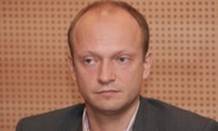


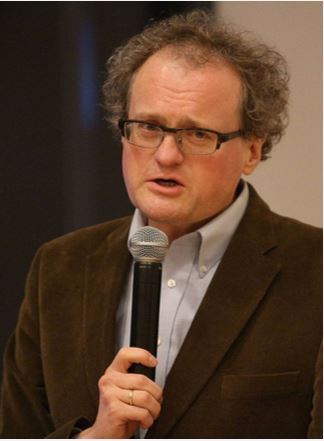
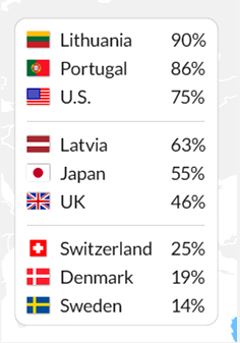
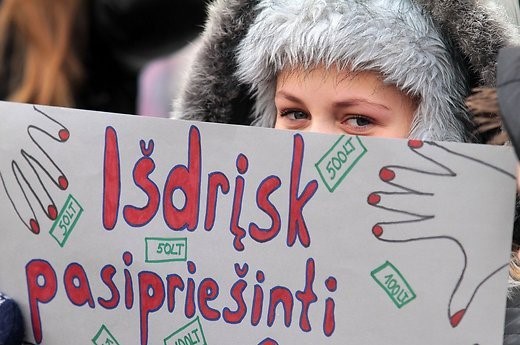


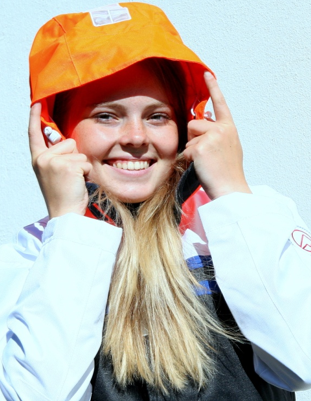
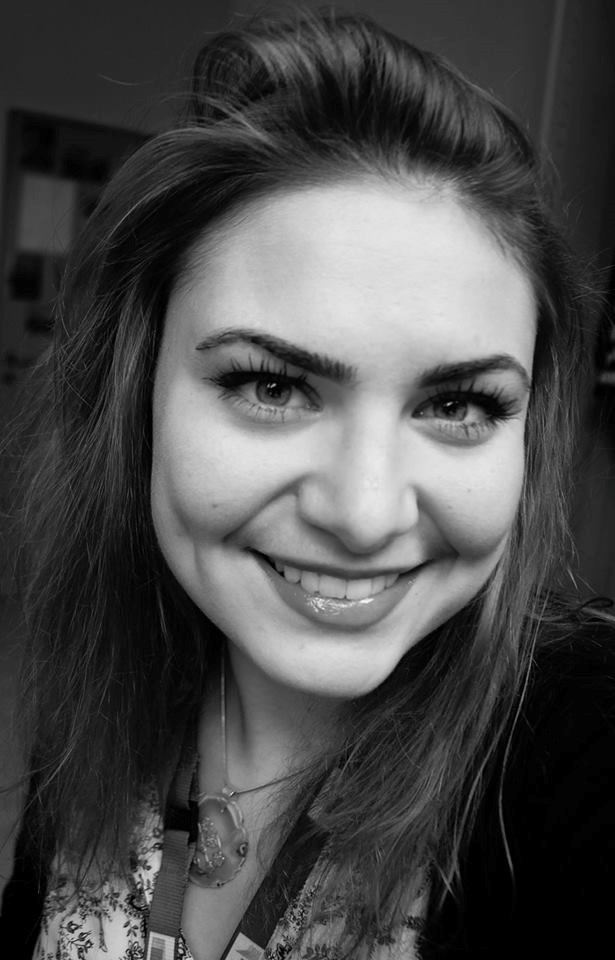
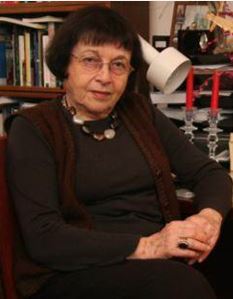
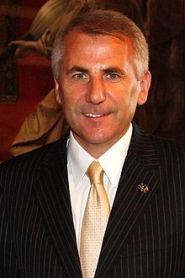
.jpg)
